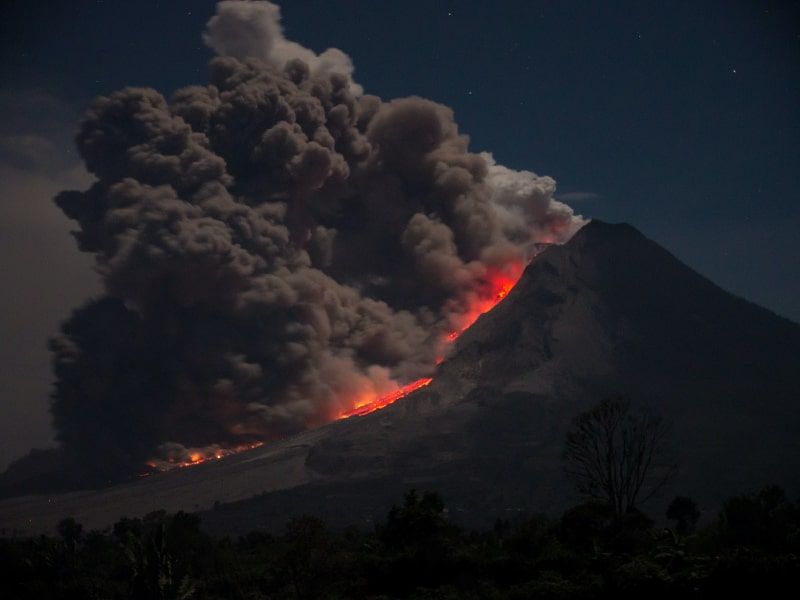Volcanic explosions suggested for incorporation into tsunami early warnings
The volcanic eruption that occurred in Tonga was equivalent to 4 to 18 megatons of TNT. The shock wave took more than 7 hours to reach the Mexican coast. A suggestion is made to incorporate volcanic explosions into tsunami early warnings.

The eruption of the Hunga Tonga-Hunga Ha'apai submarine volcano in Tonga was so powerful and unique that its outburst went around the world for more than five consecutive days, generating tsunamis in the world, which has led experts to suggest the inclusion of these explosions in the tsunami early warning.
María Teresa Ramírez-Herrera, a specialist from the Institute of Geography (IGg) of the UNAM, together with her students Oswaldo Coca and Víctor Vargas Espinosa, investigated this phenomenon registered on January 15, 2022, which generated an explosion equivalent to 4 to 18 megatons (billions of tons) of TNT and shock waves that spread through the atmosphere, even reaching the ionosphere where the satellites around our planet are located.
"This type of eruption is exceptional; that is, they occur rarely, but their effects spread to the whole planet, that is why they are so interesting. Earlier, in 1883, a similar eruption occurred because of the global effects and that was the Krakatoa volcano. The eruption of the Tonga volcano occurred on January 15, 9,000 kilometers away from the coasts of Mexico, and it took 7:30 hours to observe its effects on the coasts of our country -in the Pacific, Gulf of Mexico, and the Caribbean-", explained the academic from the Tsunami and Paleoseismology Laboratory.
The volcano had given evidence that it was active and, in fact, in the year 1100 it recorded a large eruption that impacted the planet; now it again caused marine disturbances -tsunamis-, which reached various parts of the planet.
By reviewing data from the National Water Commission (CONAGUA), Ramírez-Herrera and her students found that the generated wave took 36 hours to completely circle the Earth, but its subsequent rebounds lasted more than five days, generating disturbances in the water of the seas.
The first waves on the Mexican Pacific coast arrived at 12:35 hours on January 15, according to information from the tide gauge station in Lázaro Cárdenas, Michoacán. And the maximum height exceeded two meters at the Ensenada (Baja California) and Manzanillo (Colima) stations.
According to the records, the shock wave was the cause of the alterations in the sea of the Gulf of Mexico and the Caribbean. While the Mexican Pacific coasts were affected by the shock wave, the tsunami was generated by the eruption of the volcano and its collapse.
"What we saw is that first came the atmospheric pressure wave, which travels at the speed of sound; and then the wave that propagates through the ocean, like a tsunami," she commented.
Mexico's tsunami early warning system
Another interest of the university researchers was to know how Mexico's tsunami early warning system worked, and they found that most of the warnings reached the communities through the social networks Twitter and Facebook; however, they did not establish that people should stay away from the coasts.
And although no casualties were reported in the country, Ramirez-Herrera considered that it is necessary to incorporate volcanic eruptions and landslides into tsunami early warning systems, as happened in the case of Tonga. In such a way that this information reaches coastal communities promptly.
The expert in paleoseismology and tsunamis emphasized that beyond the large waves, the effects of the phenomenon also cause sea currents that prevent people from navigating and often sink boats, hence the importance of improving the Pacific alert.
At the time of the eruption, the warning was only activated by earthquakes, so a 5.8 magnitude earthquake had to be registered to activate it worldwide. In the case of Mexico, the tsunami warning center sent the information to Civil Protection, which then provided information through social networks and the internet.
"Although many people have cell phones, not everyone, and although many people are on networks, a senior citizen is not aware of these. In a developed country it can work well, but not in Mexico. What would be the means? Radio could be an option because through this medium people can comment on what to do, where to go, etcetera. So we have to think of more appropriate media to reach people with information," she emphasized.
The academic, who also belongs to Unesco's tsunami rapid response group, commented that this organization made a call to incorporate this type of event in the alert, as they are not common, but it is necessary to be prepared.




